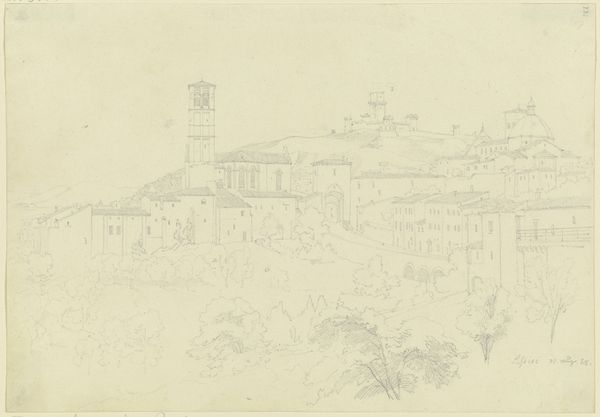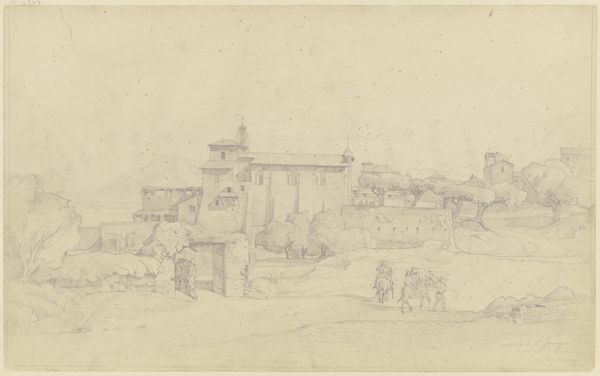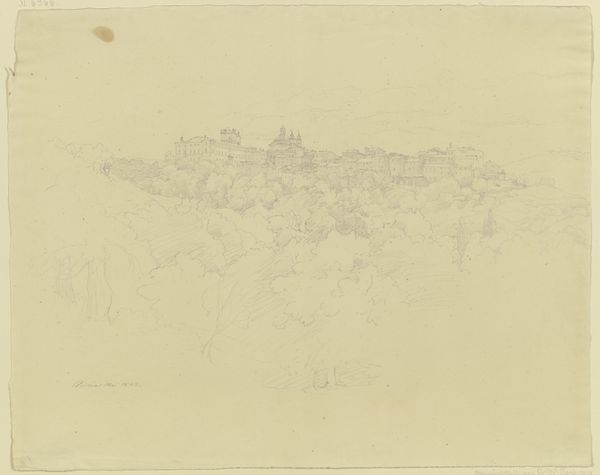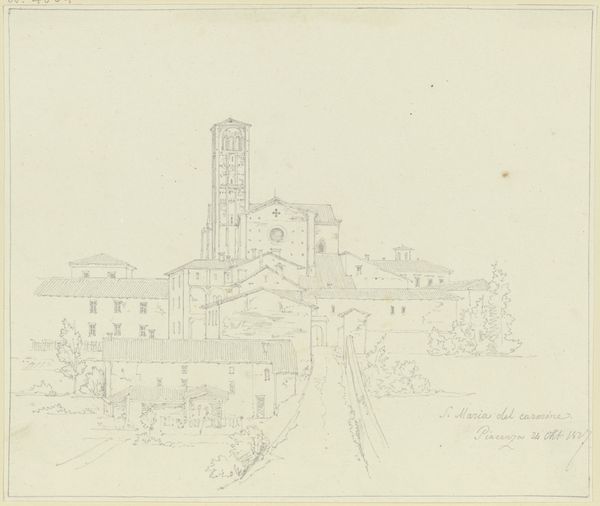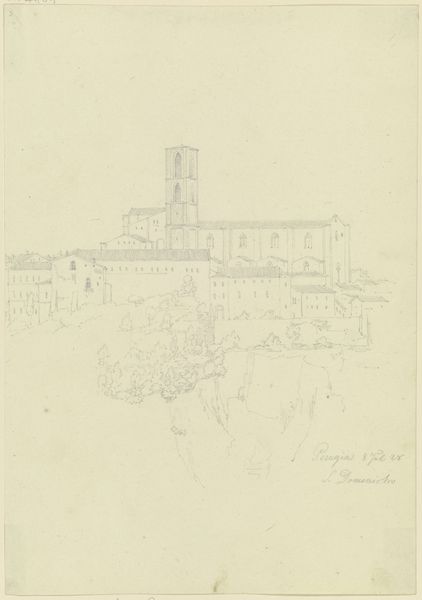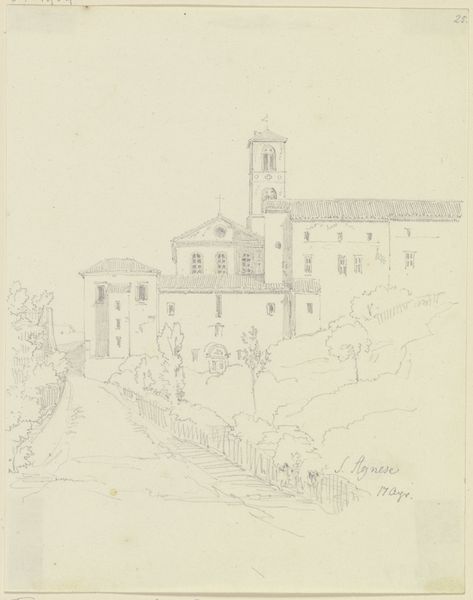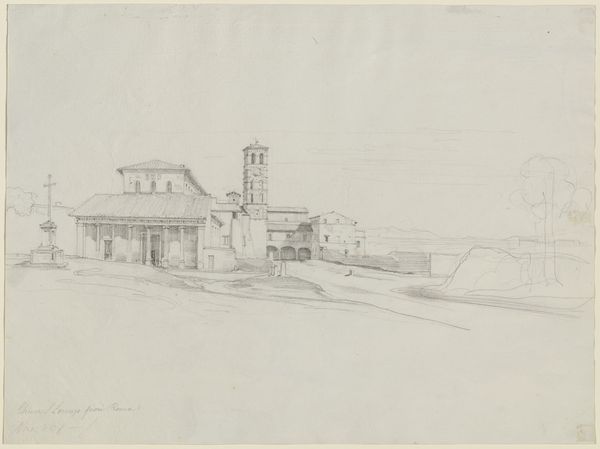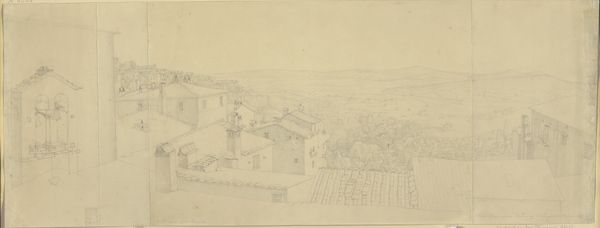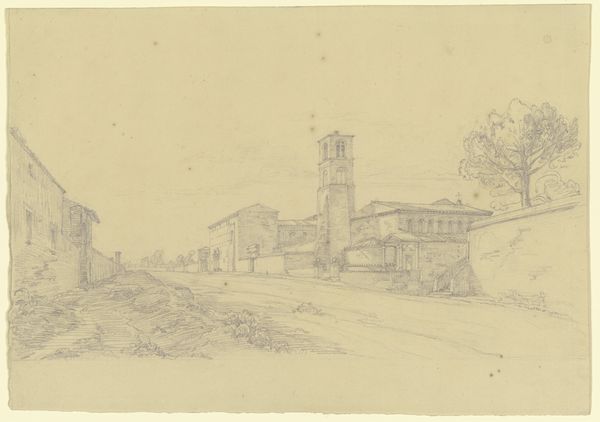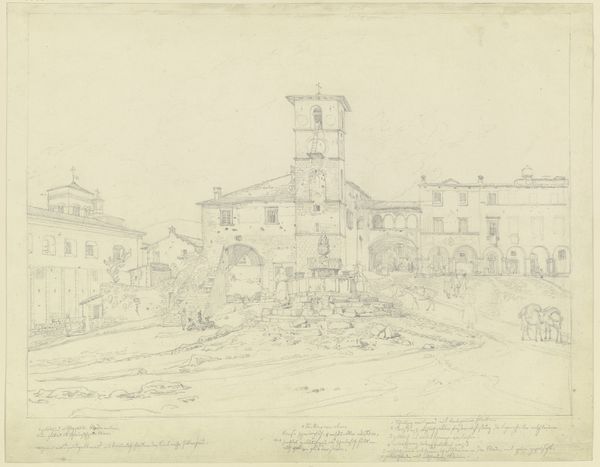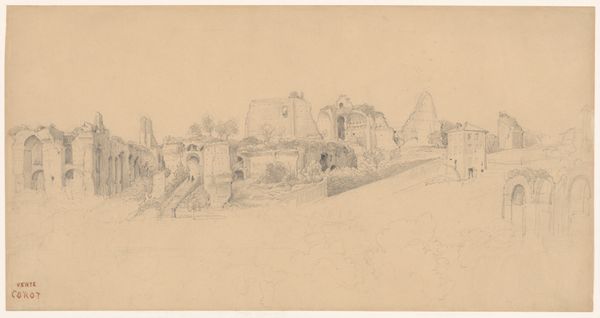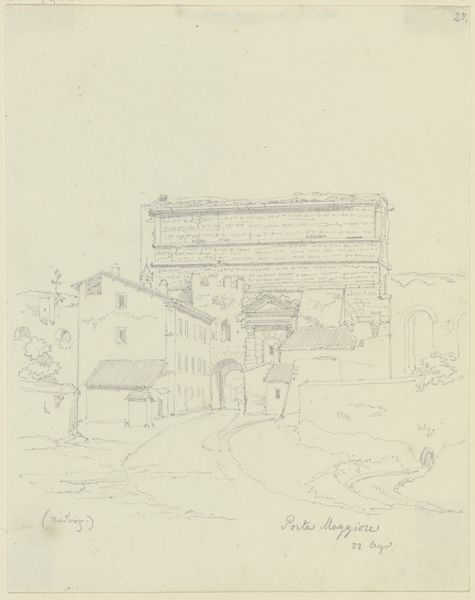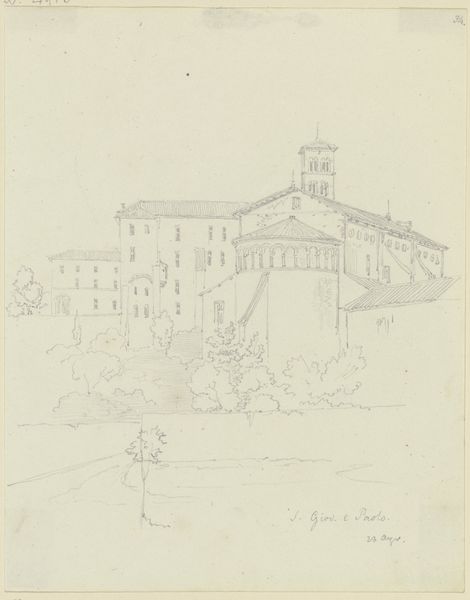
drawing, etching, architecture
#
drawing
#
etching
#
landscape
#
etching
#
pen-ink sketch
#
architecture
Copyright: Public Domain
Editor: Here we have Friedrich Maximilian Hessemer’s “S. Maria di Monteluce in Perugia,” dating from 1828, created using drawing and etching. The delicate linework creates a somewhat ethereal mood, emphasizing the architectural forms. What compositional elements stand out to you? Curator: The most salient feature is its composition; note the balanced arrangement of the architectural structure against the rolling hills. The interplay of light and shadow is intriguing. Notice how the hatching technique defines the volumetric forms of the buildings. The structure appears sturdy and formidable, but also serene. Editor: It’s interesting that you focus on the contrast of the architectural details with its environment; I wouldn't have thought about it like that. What's your take on the emphasis on line? Curator: The dominance of line is crucial. It isn't merely representational. Look how Hessemer varies the pressure, creating a nuanced surface texture. Do you see how the density of lines in certain areas establishes a visual hierarchy, guiding the viewer's eye? Editor: So, rather than just a picture of a place, it's about how the lines build structure and mood? Curator: Precisely. The subject of the piece becomes a formal investigation of representation through line and tonal variation. Even the use of blank space is important, directing your gaze. The landscape becomes legible through subtle differentiation in its graphic handling. Editor: This perspective has illuminated the structural and atmospheric complexities for me. Curator: Indeed, art, in its purest form, encapsulates a rigorous interrogation of seeing and representation. I appreciate this careful exercise in artistic skill.
Comments
No comments
Be the first to comment and join the conversation on the ultimate creative platform.

